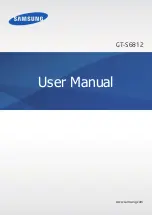
Theory of Operation
ACC2500 Audio Control Center
09/08 32
Transmit Audio
Transmit audio is originated from the DSP in digital format. The DSP combines DTMF tones and voice
audio to generate the transmit audio.
It is converted to analog by the D/A section of U15. Upon conversion to analog, the audio is passed
through the line-out gain stage consisting of U11 and U10 for level adjustment. U10 also provides the
proper line drive and line enable for the transmit audio.
U10-1 is the line-driver enable for the transmit audio. This provides for a 560-ohm transmit output
impedance.
Microphone Audio
The three sources for mic audio are the internal, handset, and audio accessory mic. The microcontroller
controls which mic is used based on the source of the PTT. The selected mic audio is gated between the
handset/internal and the audio accessory mic by U14 using the outputs of U5–C6. The selection of the
handset and internal mic is controlled by U5–C5.
When U5-C5 is high, U25 will provide a high level of VMB or mic-bias voltage to the internal mic, thus,
enabling the internal mic and disabling the handset mic. If U5–C5 is low, the internal mic will not have mic
bias, but the handset mic will and, thus, the handset mic is selected.
The audio accessory port can be configured to provide a mic bias to the audio accessory. This is controlled
by the microcontroller using U5–C7. Each mic audio is gain compensated by U22 so that the same level is
presented to the mic gain-stage consisting U12 and U22. The audio is then presented to the A/D section of
U17 where it is converted to digital for use by the DSP. The DSP compresses the mic audio using.
Relay Control Module
The reference designators listed in this section refer to the relay control schematics unless otherwise stated.
The relay control module is used to provide closures out via relays and sense closures via closures to
ground. The microcontroller provides closure-out information and reads closure-in information via serial
data. Closure outputs are controlled by the data in U701. Closure senses inputs are read from U702.
To provide a closure on relay 1, the microcontroller asserts U701-15. This, in turn, drives the
corresponding Q701 that provides the ground for the coil of K701. To provide a closure sense input on
input 1, J701-5 must be grounded. This, in turn, is latched into U702 by the microcontroller where the
microcontroller takes the appropriate action.
Reset Circuit
Both the DSP and the microcontroller use the EPROM, U2. When coming out of reset, the DSP must boot
its software from the EPROM. In doing so, it asserts U1-21, BMS, low, causing the microcontroller to
remain reset.
After the DSP has completed loading its software from the EPROM, it no longer requires access to the
EPROM. The DSP then disasserts BMS, allowing the microcontroller to come out of reset. The
microcontroller then executes its software from the EPROM.
Содержание ACC2500
Страница 43: ...39 09 08 Circuit Boards...
Страница 44: ...Circuit Boards ACC2500 Audio Control Center 40...
Страница 45: ...ACC2500 Audio Control Center Circuit Boards 41...
Страница 46: ...Circuit Boards ACC2500 Audio Control Center 42...
Страница 47: ...43 09 08 Schematics...
Страница 48: ...ACC2500 Audio Control Center Schematics 44 Desk Set Line Interface Sheet 1...
Страница 49: ...ACC2500 Audio Control Center Schematics 45 Desk Set User Audio I O Sheet 2...
Страница 50: ...Schematics ACC2500 Audio Control Center 46 Desk Set Control Microprocessor I O Sheet 3...
Страница 51: ...ACC2500 Audio Control Center Schematics 47 Desk Set DSP Block Sheet 4...
Страница 52: ...Schematics ACC2500 Audio Control Center 48 Desk Set Tone Key Panel Sheet 5...
Страница 53: ...ACC2500 Audio Control Center Schematics 49 Desk Set Power Supply Sheet 6...
Страница 54: ...Schematics ACC2500 Audio Control Center 50 Schematic Sheet 7...
Страница 55: ...ACC2500 Audio Control Center Schematics 51...
Страница 56: ...ACC2500 Audio Control Center 52 Notes...
















































